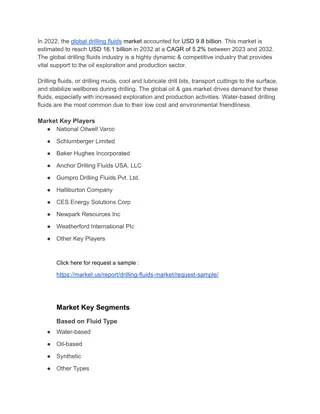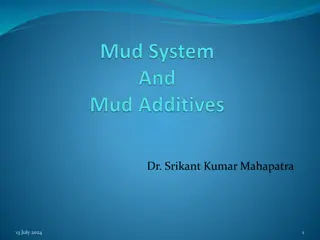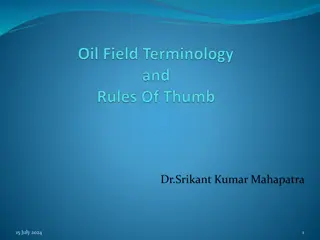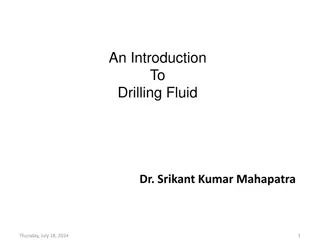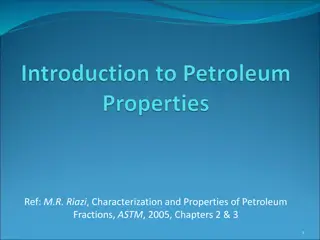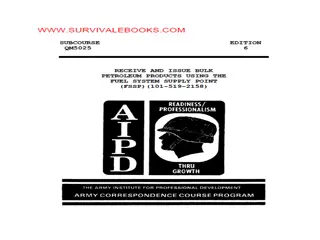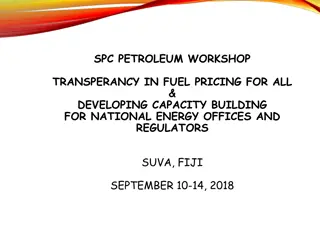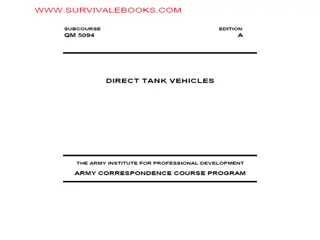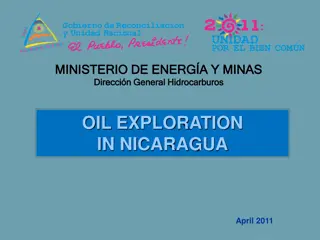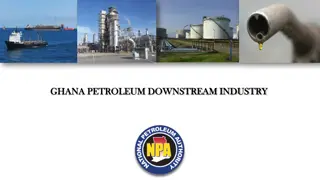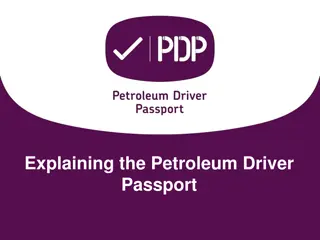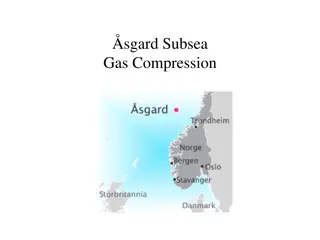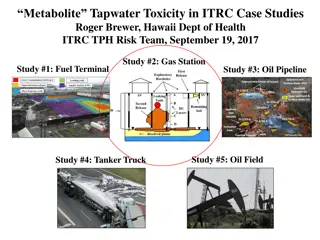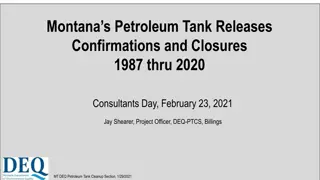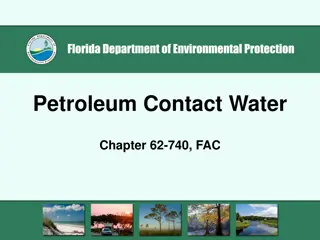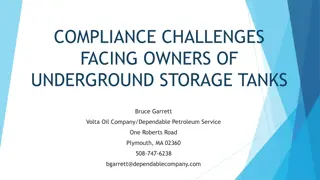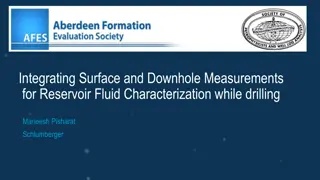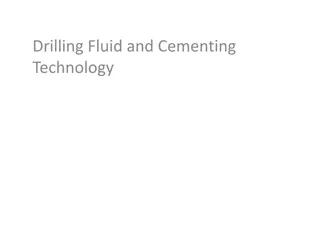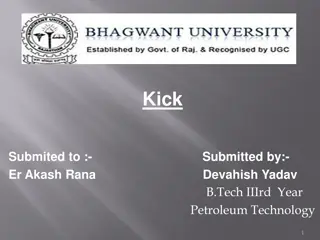Overview of Petroleum Industry Drilling Operations
Learn about routine drilling operations in the petroleum industry, including preparing the drill site, rigging up, making connections during drilling, running surface casing, and cementing the casing to create a seal in the wellbore.
Download Presentation

Please find below an Image/Link to download the presentation.
The content on the website is provided AS IS for your information and personal use only. It may not be sold, licensed, or shared on other websites without obtaining consent from the author.If you encounter any issues during the download, it is possible that the publisher has removed the file from their server.
You are allowed to download the files provided on this website for personal or commercial use, subject to the condition that they are used lawfully. All files are the property of their respective owners.
The content on the website is provided AS IS for your information and personal use only. It may not be sold, licensed, or shared on other websites without obtaining consent from the author.
E N D
Presentation Transcript
PTRT 1301 Overview of Petroleum Industry Chapter 4D Drilling Operations Oil and Gas Technology Program Technology Program Oil and Gas
Routine drilling operations Preparing the drill site Build cellar ~ 10 x10 x10 Provides room under the rig for equipment Drill conductor hole (in soft soils this can be pile driven) Rat hole Holds kelly Mouse hole Holds a section of drill pipe Oil and Gas Technology Program
Rigging Up Install the base box on box or slingshot Hoist the mast or assemble the derrick Install remaining surface equipment. Spudding in Add collars & drill pipe until you reach the bottom of the conductor hole. Attach the kelly Add weight to the bit, circulate mud, and begin to drill Oil and Gas Technology Program
Review Drilling Photos PTRT1301 Chapter 4C%20-EnCana Rig Tour.pptx Oil and Gas Technology Program
Making Connections When the top of the kelly reaches the point just above the bushing. Hoist kelly & drill pipe off the bottom then break out the kelly (unscrew it) Break out tongs. Pulled by the cathead Back up tongs on the drill pipe at the tool joint remain fixed in place. Remove the tongs and use rotary table to spin out the pipe or use kelly spinner Move the kelly above the mouse hole to pick up another section of drill pipe. Oil and Gas Technology Program
Making Connections (cont) Attach the section of pipe to the kelly Lower into the hole and continue drilling with the top drive. With a top drive you can do 2 or 3 sections of drill pipe at a time. To install casing, change bits, or perform some other operation you must pull the ENTIRE drill stem and the bit out of the hole Tripping pipe Use elevators to pull triples Derrick hand on the monkey board stacks drill pipe into the fingerboard Oil and Gas Technology Program
Running surface casing Install Casing typically a separate crew Casing slips Casing tongs Casing elevators Centralizers, casing shoe, scratchers. Float collar (check valve) Cementing the casing Recirculating cement mixer (rcm) Portland cement & additives (fig.4.51) Oil and Gas Technology Program
Cementing the Casing Create a seal between the casing and the well bore Cement head and plug container Release bottom plug Clears casing of mud Once on bottom cement pressure breaks a seal and allows cement to flow through the plug through the hole in the casing shoe and into the space between the casing & the hole. (annulus) When enough cement is in you release top plug and push it to the bottom with saltwater. WOC Waiting on Cement Oil and Gas Technology Program
Intermediate Casing Often used on deeper wells Saves $$$ don t come all the way to the surface Correct lost circulation Abnormal pressure Smaller bits fit through intermediate casing to drill to the final depth Oil and Gas Technology Program
Liner Casing supported by a hanger Reduced cost for deeper wells because it doesn t come all the way to the surface Oil and Gas Technology Program
Controlling formation pressure Hydrostatic pressure Weight of the drilling mud column divided by area of tubing. Formation pressure Pressure exerted by the formation fluids due to fluid pressure in the reservoir Pressures must balance each other or the well will kick Several reasons for the well to kick Unexpected formation pressure Swabbing from the drill pipe during trip Mud level decrease Controlling the kick Shut in well with BOP (Fig. 4.55) Circulate intruding kick-fluid out of the hole Add weighting material to the drilling mud. Oil and Gas Technology Program
Formation Evaluation Mud logging Wireline logging DST Core samples Set final production casing Skip off shore drilling Oil and Gas Technology Program
Directional Drilling 2-3 degrees per hundred feet 90 degree turn would take between 3000-4500 feet of depth. (fig. 4.79 ) Bent sub & downhole motor Bent sub Short piece of pipe bent in the middle drill string does not rotate. Downhole motor Rotates only the bit using either a turbine or an elliptical inlet & spiral shaft Oil and Gas Technology Program
Directional Drilling (cont) Orient the hole with an inclinometer (usually based on gravity) Can also use a steering tool on a wireline MWD measurement while drilling Uses a mud pulse generator to send encoded signals through the drilling mud to the surface. Wireless self-contained transponder. Oil and Gas Technology Program
Oil and Gas Technology Program
Fishing Retrieving stuck objects fish from the wellbore. Parts of the drill stem Junk- bits of the debris, tools, etc Drill pipe can get stuck for a number of reasons Hole collapses around the pipe Stuck in dogleg or key seat Pressure pins the pipe to the wall Hole collapse-interstitial salt water Oil and Gas Technology Program
Examples: Sloughing Interstitial salt water in the shale Attracts the water in the drilling mud Salt water then has a tendency to transfer to the shale The transferred water swells the pores and can cause the shale to slough off into the hole Dogleg or Key seat Pipe erodes its way into the side of the hole in a crooked section of the hole During a trip larger diameter components can get stuck in the narrowed key seat Pressure Excess pressure hydrostatic can force wall cake to build up so thickly that when drill pipe is not rotating it gets sealed into the hole Oil and Gas Technology Program
Freeing a stuck pipe Freeing wall stuck pipe can be done by spotting oil. Lubricate the stuck area of the drill pipe (circulate it down with the drilling mud as a slug) Install a jar (bumper sub) Mechanically apply large downward impulse to drill pipe Hydraulically applies large upward impulse to the stuck pipe Oil and Gas Technology Program
Mechanical Hydraulic Oil and Gas Technology Program
Freeing Stuck Pipe Use free point indicator Magnetic device that can sense the stretching of the pipe in the free areas as compared to the section that is stuck and does not stretch Run in a string shot to jar the thread while unscrewing them. Trip the freed pipe to the surface. Washover pipe is used to both latch onto the top of the stuck pipe and drill around the pipe to free it from the well. Rotary shoe Does the cutting while the back off connector holds onto the pipe end. Oil and Gas Technology Program
Twisted-Off Pipe Pipe breaks in the hole (twistoff) Retrieve using overshot or spear Overshot goes over the outside of the pipe and grabs it from the outside while the spear gets inside the fish and grabs from the inside Spear is used when there is not enough space around the outside of the fish such as near drill collar Sometimes milling the top of the fish is required to make the grab easier. Oil and Gas Technology Program
Spear Overshot Tapered Tap and Die Oil and Gas Technology Program
Cutters Washover Oil and Gas Technology Program
Jet Cutter Chemical Cutter Oil and Gas Technology Program
Air or Gas drilling PROS Higher penetration rates Lower bit cost CONS Hazard of fire or explosion No significant bottom hole pressure thus drilling into a high pressure formation is dangerous. Corrosion in the pipe has been a problem as well (corrosion is oxidation - most drilling muds are anoxic) Large compressors to circulate air One pass through system Out through the blooey line Oil and Gas Technology Program



